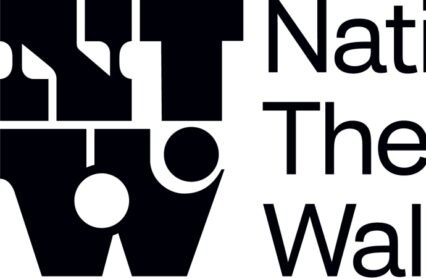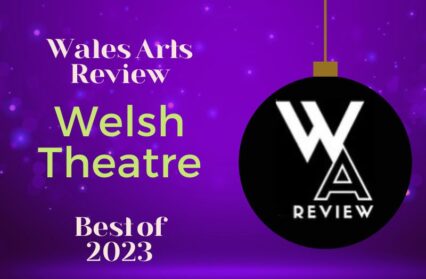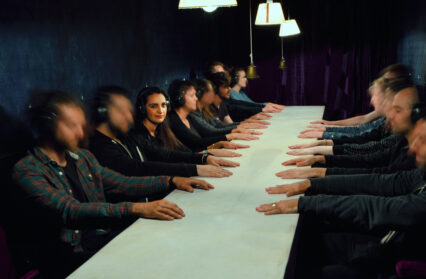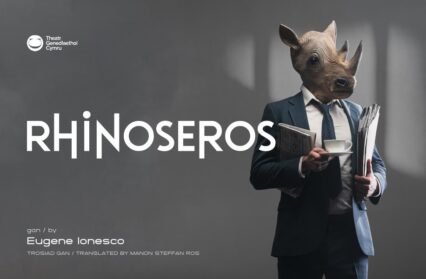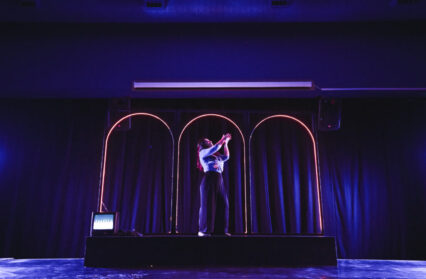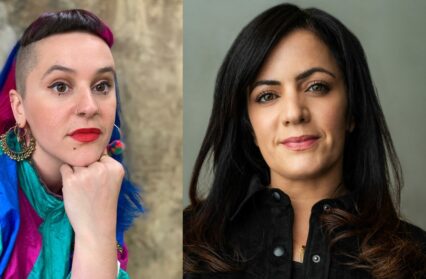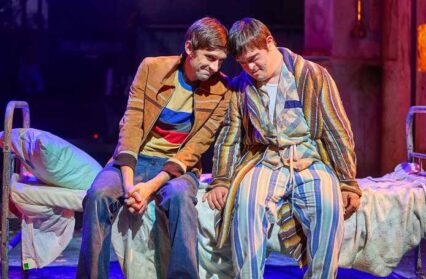Venues: Chapter Arts Centre, Dempsey’s, Arcade Cardiff, 10ft Tall, GwdiHw, South Riverside Community Development Centre and Sherman Theatre Cymru
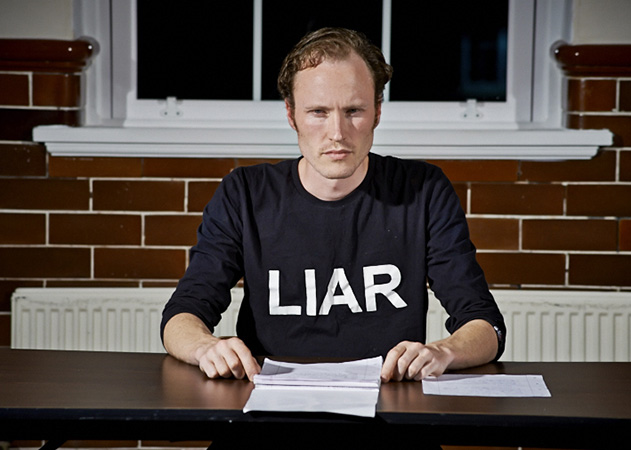
by Richard Pettifer,
Chapter Arts Centre
Photo: Jorge Lizalde/International Performance Festival Cardiff
The inaugural International Performance Festival Cardiff began this month, with the city playing host to three weeks of exciting performances and workshops from both Wales-based and international performance artists and theatre companies.
IPFC 2014 is the brainchild of theatre director and Chapter’s former Theatre Programmer, James Tyson (Intangible Studio). The festival aims to provide ‘an opportunity to engage with artists whose works in some way extend notions of the possibilities of art, as developed from a sense of place, social change or community’.
Our Managing Editor Phil Morris caught up with James to talk about his ambitious programme, which schedules leading advanced theatre practitioners in a range of venues across Cardiff.
Phil Morris: What inspired you to organise the inaugural International Performance Festival Cardiff?
James Tyson: The work of a few artists from across the world that I felt were exceptional and that related to certain artists in Cardiff, such as Beth Greenhalgh and Davida Hewlett, who I felt have continued to make poetic and pioneering work, often outside of institutional structures.
What is it about Cardiff that makes it a suitable home for an international festival of performance art and avant-garde theatre?
One could write a long book about that, such as Professor Heike Roms has been working on through her What’s Welsh for Performance? Beth yw ‘performance’ yn Gymraeg? project. There has been a continued history of investment in performance art and avant-garde theatre as a significant art-form in Cardiff, both within higher education, specifically the Cardiff School of Art and Design, and through one of the UK’s early and most pioneering artist-led contemporary art venues: Chapter Arts Centre.
Tell us about some of the various venues you have chosen to host events across the city. How did you go about pairing each performance event with a particular space?
I worked with Chapter as a lead venue for the festival, knowing that the initial programme (with artists including Hellen Sky, Beth Gill, Ranters Theatre and Laura Lima, La Communauté Inavouable) could mostly take place there, and also asking the Acoustic Tuesday music club, which is run by musicians Frankie Armstrong, Darien Pritchard, Robert Evans, Mary-Anne Roberts and Mikey Price, if we could open the festival with their regular monthly music gathering, which takes place at the Riverside Community Development Centre.
In visiting the Arcade Cardiff gallery in the Queen’s Arcade in Cardiff – which has done an incredible job of building an independent programme of visual art exhibitions over the past few years based in an empty shop unit – Rob Kennedy, the gallery co-director, asked if we might like to organize some event as part of the programme there. This seemed to offer an excellent space for Beth Greenhalgh to develop a performance artwork that could evolve as an ongoing installation through the duration of the festival. The ‘open call’ programme was an opportunity to develop a more porous engagement with the city, with artists sending in proposals for works which we then found sites for across the city, such as bars, clubs and also another arts venue, Sherman Cymru.
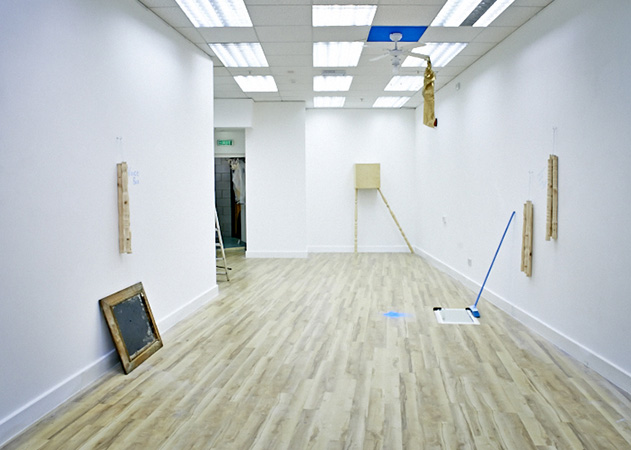
Arcade Cardiff Photo: Jorge Lizalde/International Performance Festival Cardiff
How did you select which artists and companies would perform at this year’s festival? How much interest was shown by international companies?
I felt the particular artists I wanted to invite were each dealing with specific ideas of performance and its relation to the making and influence of a sense of community, in very particular ways. It is this aspect of performance that seemed to lend itself to putting together what became a festival.
Who are some of the Welsh artists featured at this year’s festival? What is the standing of Welsh performing artists and theatre companies on the global stage?
To answer that one would have to define ‘Welsh’. Whilst Wales has a unique and pioneering history of performance across Europe and internationally, for the festival we have referenced the participating artists based on the city or region from which they come from. To reinforce national categories seems relied upon in a way that I’m not sure really develops the art-form and its role within a society or an audience’s engagement with it.
Several of the festival events feature collaborations between Welsh artists and international creative partners – how did these collaborations come about? Did you approach artists and suggest collaborations, or did they come to you?
Works such as Paul Jenkins’ collaboration with Alma Alter Theatre Laboratory came about through Paul’s own initiative and experiences of stumbling upon an experimental theatre group in Sofia, Bulgaria and becoming inspired by what they did, and this leading towards a gradual process of working together and collaboration. The festival has tried to provide a place to accommodate such processes which can often be formative as to why and how people make performance.
The festival programme includes workshops alongside performances/showcases. Why did you feel it was necessary to do so?
So that it is possible for people to take part. Performance and art can often be presented as a finished work, which can be a very beautiful thing. Yet also how does this relate to daily life? How do we, as Davida Hewlett describes, engage with ‘creating conditions’ that enable us to develop a certain creativity in the every-day structures that affect and shape our every-day lives? A workshop can be a place for audiences to think about or develop their own creativity, through experiencing how art is made and what its concerns may be.
It’s an exciting time for Welsh theatre – with the emergence of new exciting playwrights, two national theatre companies and the growing international profile of NoFit State. If the International Performance Festival Cardiff were to become established as an annual (or at least regular) event, what part do you hope it will play in the development and promotion of Welsh theatre?
That Welsh theatre is nothing unless it touches upon a certain common and shared humanity.
With the festival rapidly coming to its close (it ends June 22nd) what are the new and exciting trends that you can detect as emerging in the field of international performance?
That it takes time, and that if performance is to continue, it resists commodity, and that if it is merely a showpiece of institutions of any kind there is nothing to sustain it. That it involves a profound commitment of the people that make it, and that it is integrally a part of a community’s history.
 What are some of your personal highlights from this year’s festival?
What are some of your personal highlights from this year’s festival?
The reactions of audiences that have come to the festival, listening to the festival artists on Pitch Radio, the generosity and vision of the artists that took part.
The International Performance Festival Cardiff ends this Sunday 22nd of June. For more info on the remaining events go to:
http://www.chapter.org/season/international-performance-festival-cardiff



